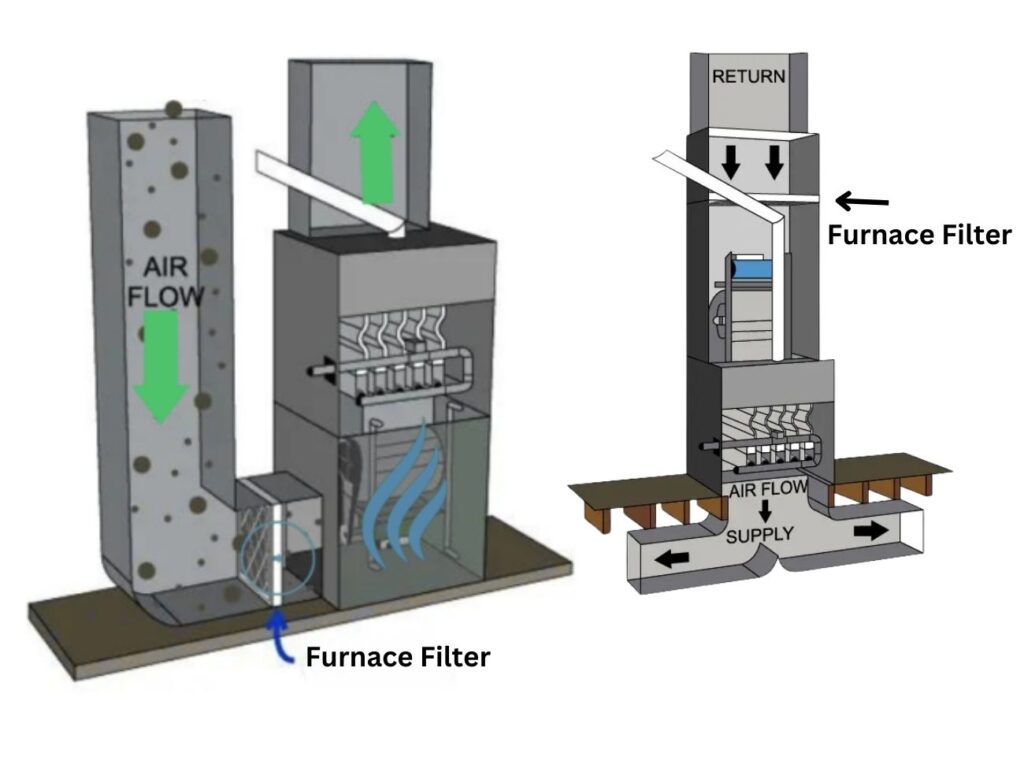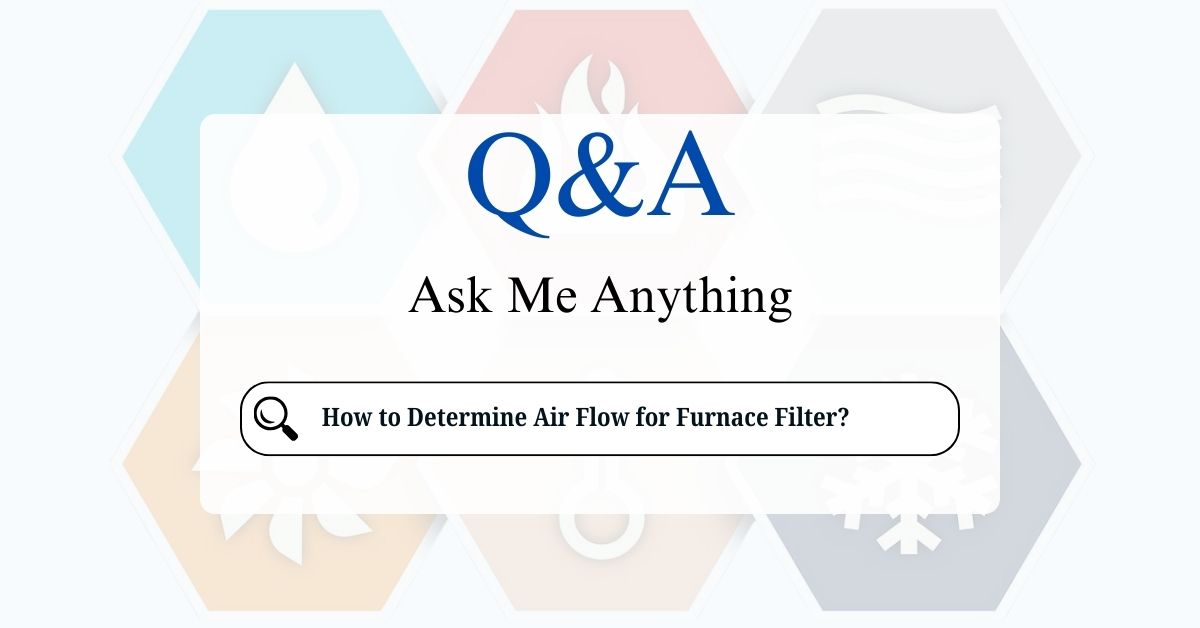Choosing the right furnace filter is about more than just size; it’s also about airflow. A filter that’s too restrictive can hinder your furnace’s efficiency and even cause problems. This guide will help you understand airflow, how it relates to furnace filters, and how to choose the right filter for optimal performance.
Airflow is the volume of air moving through your furnace system, measured in cubic feet per minute (CFM). Furnace filters are designed to capture airborne particles while allowing sufficient airflow. The Minimum Efficiency Reporting Value (MERV) rating indicates a filter’s ability to capture particles.
- Higher MERV Ratings: These filters capture smaller particles, like bacteria and viruses, but they also restrict airflow more.
- Lower MERV Ratings: These filters capture larger particles like dust and pollen, allowing for better airflow.
Finding the right balance between filtration and airflow is key.

Proper airflow is essential for several reasons:
- Furnace Efficiency: Restricted airflow forces your furnace to work harder, reducing its efficiency and increasing energy costs.
- System Performance: Poor airflow can lead to uneven heating, overheating, and even premature failure of furnace components.
- Indoor Air Quality: While high-MERV filters offer better filtration, excessively restricting airflow can actually worsen indoor air quality by reducing the overall circulation of air.
Factors Affecting Airflow
Several factors can affect airflow through your furnace filter:
- Filter Type and MERV Rating: As mentioned earlier, higher MERV ratings generally mean more restricted airflow.
- Filter Thickness: Thicker filters generally have more surface area for capturing particles, but they can also restrict airflow more than thinner filters of the same MERV rating.
- Ductwork Design: The design and size of your ductwork can affect airflow. Narrow or obstructed ducts can restrict airflow regardless of the filter used.
- Blower Motor: The power of your furnace’s blower motor also plays a role in airflow. A weaker blower motor may struggle to push air through a high-MERV filter.
Determining Airflow for Your Furnace Filter
Unfortunately, there’s no single perfect airflow number for all furnaces. However, here’s how you can determine the appropriate airflow for your system:
1. Check Your Furnace’s Manual
Your furnace’s owner’s manual should specify the required airflow (CFM) for your specific model. This is the most accurate way to determine the ideal airflow.
2. Consult an HVAC Professional
If you can’t find the information in your manual, an HVAC professional can measure the airflow in your system using specialized tools.
3. Consider Your Needs
If you have allergies or respiratory issues, you might benefit from a higher MERV filter, even if it slightly reduces airflow. However, if you don’t have these concerns, a lower MERV filter with better airflow might be a better choice.
Here’s a general guideline for choosing MERV ratings based on common needs:
- MERV 1-4: Basic filtration for larger particles like dust, lint, and pollen. Good airflow. Suitable for most homes without specific air quality concerns.
- MERV 5-8: Moderate filtration for smaller particles like mold spores and pet dander. Offers a good balance of filtration and airflow. Suitable for homes with pets or mild allergies.
- MERV 9-12: High filtration for very small particles like bacteria and some viruses. Restricts airflow more significantly. Suitable for homes with severe allergies or respiratory conditions.
- MERV 13-16: Very high filtration for microscopic particles. Significantly restricts airflow and may not be suitable for all residential furnaces. Typically used in hospitals and other specialized environments.
After installing a new filter, pay attention to your furnace’s performance. If you notice any of the following, the filter might be too restrictive:
- Reduced Airflow from Vents: If the airflow from your vents is noticeably weaker than usual.
- Longer Run Times: If your furnace runs for longer periods to reach the desired temperature.
- Increased Noise: If your furnace is making more noise than usual.
- Overheating: If your furnace is cycling on and off frequently or shutting down due to overheating.
Using a Manometer to Check Airflow Restrictions
A manometer is a tool that measures air pressure. HVAC technicians use it to measure static pressure in ductwork, which can indicate airflow restrictions. This is a more advanced method and is generally not recommended for homeowners unless they have experience with HVAC systems.
Choosing the right furnace filter involves finding a balance between filtration and airflow. By understanding MERV ratings, considering your needs, and observing your furnace’s performance, you can choose a filter that provides clean air without compromising your furnace’s efficiency.
If you have any concerns about airflow or choosing the right filter, consult an HVAC professional for personalized advice. They can help you ensure your furnace is running at its best.






